Bipolar disorder is a serious mental illness that can cause dramatic mood swings, lapses in judgment, and episodes of psychosis. According to the National Alliance on Mental Illness (NAMI), over six million American adults are living with bipolar disorder, and many of them are not receiving adequate treatment for their symptoms.
Bipolar disorder is a serious mental illness that can cause dramatic mood swings, lapses in judgment, and episodes of psychosis. According to the National Alliance on Mental Illness (NAMI), over six million American adults are living with bipolar disorder, and many of them are not receiving adequate treatment for their symptoms.
Despite its prevalence, bipolar disorder still carries stigma, much of which can be attributed to early understandings of the condition, formerly known as “manic depression.” But advances in medical research and renewed efforts in building mental health awareness have revolutionized the diagnosis and treatment for bipolar disorder that’s available today.
The origin of the term “manic depression”
Bipolar disorder can trace its earliest roots to the first century, when ancient Greeks and Romans established the opposing terms “mania” and “melancholia” to describe the symptoms of mental illness. In modern English, these two words translate to “manic” and “depressive.”
However, the term “manic depression” wasn’t formally used until the early 20th century, when German psychiatrist Emil Kraepelin used it to describe mental illness involving mood swings and emotional disturbance—periods of “mania” alternating with periods of depression. Kraepelin’s work on classifying mental disorders became the basis for the Diagnostic and Statistical Manual of Mental Disorders (DSM) that psychiatrists use to develop diagnoses today.
The shift to bipolar disorder
The term “bipolar disorder” was first introduced during the third revision of the DSM in 1980, when psychiatrists agreed to do away with the term “manic-depressive.” Using the word, “manic” often led patients to be described as “maniacs,” a label fraught with stigma and judgment.
Furthermore, by reclassifying the condition as bipolar disorder, mental health professionals were better able to distinguish discrete symptoms – not just those related to emotions or mood, but physical and cognitive ones, as well. This specificity allowed doctors to give patients a more accurate, clinical diagnosis for their condition.
Modern definitions of bipolar disorder
According to NAMI, there are four different types of bipolar disorder defined in the latest version of the DSM:
-
Bipolar I disorder
People with bipolar I disorder experience manic episodes that last for at least seven days or are so severe that they require hospitalization. Many people with bipolar I disorder also experience prolonged depressive episodes, lasting for two weeks or longer.
-
Bipolar II disorder
Bipolar II disorder is characterized by a pattern of interspersed manic and depressive episodes, but the symptoms are often much less severe than those of bipolar I disorder.
-
Cyclothymic disorder
Also known as cyclothymia, this rare disorder causes mood swings and shifts in emotional state, but they’re not as extreme as those associated with bipolar I or bipolar II disorders.
-
Unspecified bipolar disorder
When a person experiences clinically significant shifts in mood elevation, but they don’t meet the exact criteria for bipolar I, II or cyclothymia, they’re said to have an unspecified bipolar disorder.
Obtaining the right diagnosis for bipolar disorder can be difficult, particularly because the symptoms often mimic those of other types of bipolar disorder, or even different mental health conditions, such as depression or schizophrenia. Because an accurate diagnosis is crucial to receiving proper treatment, it’s important to see a trusted, experienced mental health professional for a full psychiatric evaluation. learn more about our schizophrenia treatment program
Get help for bipolar disorder at Alvarado Parkway Institute
Alvarado Parkway Institute has been providing mental health services to the people of San Diego for over 35 years. We’re committed to the health and wellbeing of all our patients, offering comprehensive inpatient and outpatient treatment, including a partial hospitalization program and dual diagnosis treatment for those struggling with a cooccurring addictive disorder.
Don’t let fear or stigma prevent you from living your life to the fullest. Get help for bipolar disorder at Alvarado Parkway Institute. Call our 24-hour crisis line today at (619) 667-6125.
